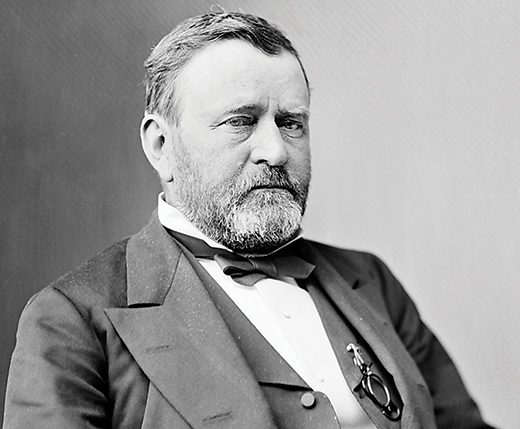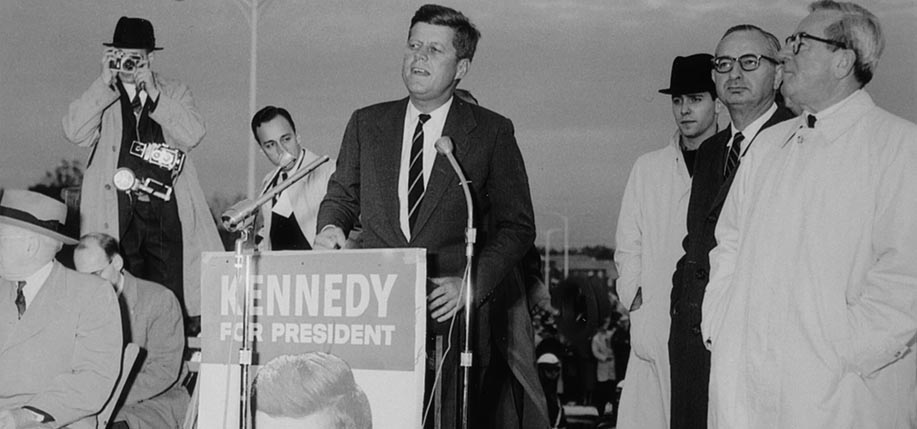In 2020 you can safely bet that the biggest topic of news and conversation is going to be the presidential election. And until midsummer, the hottest sub-topic will be “Who will the Democrats choose for their ticket?”
I have a suggestion: select someone with Irish heritage.
This is not a willy-nilly witticism. The numbers back me up. More than one-third of U.S. presidents have had Irish blood flowing in their veins. The trend began in 1829 with the election of Andrew Jackson, and for 101 of the past 191 years – more than 50 percent of the time – an Irish American has occupied the White House. Eleven of the 20 men have practiced law, four have had military backgrounds, three excelled in business, and two were academics. The best statistic is this: of the last eleven candidates voted into the Oval Office – beginning with John F. Kennedy – nine claim Irish ancestry! Here’s another way of looking at it: in only six of the past 58 years has our chief executive not been an Irish American.
I’m no political pundit, but it sure seems to me that since 1960, having ties to Ireland and getting Irish Americans to exercise their right to vote on Election Day have been boons to anyone seeking the office of president of the United States. Though a stranger to most truths, this fact has not escaped the attention of the current White House resident: Donald Trump’s claim of having ancestral ties to Ireland was disproved – nevertheless, it went viral.
Unlike policy, presidential food preferences don’t usually make headlines. There’s a good reason for the way the White House press corps addresses the presidential pantry. Information about what our chief executive prefers eating can have huge impact on the food industry. When word spread that Ronald Reagan’s secret treat was cottage cheese smothered in ketchup, school lunchrooms countrywide listed the condiment as a vegetable. George Bush, Sr.’s dislike of broccoli caused sales for the healthful vegetable to plummet. In contrast, when it leaked out that Bill Clinton enjoyed hamburgers, beef sales soared.
In the case of our Irish-American presidents, they – like yours truly and most of my readers, too, I would guess – have food preferences shaped by Irish ancestry. There’s evidence aplenty that Irish food traditions played an important part in White House meals during each of the 20 tenures. James Polk and Abraham Lincoln loved ham, as does Jimmy Carter, even though we tend to connect him primarily with peanuts. Ulysses S. Grant, William McKinley, and Woodrow Wilson all started their day with a big Irish breakfast, and Wilson’s often included strawberries, another Irish culinary delight. Chester Alan Arthur derived immense pleasure from fishing, and salmon – the Irish King of Fishes – appeared frequently at both informal and state dinners. Lyndon Baines Johnson, George Bush, Sr., and George W. Bush preferred beef – a measure of wealth not only in Texas but in ancient Ireland as well – above all else.

Beer has a long history in Ireland, and Barack Obama so enjoyed an occasional pint that, in 2011 after purchasing a home-brewing kit with personal funds, he asked the White House chefs to create a “House” brew. Made with honey gathered from hives on the South lawn, it was called White House Honey Ale and served at that year’s White House Super Bowl party and Saint Patrick’s Day dinner. Per Freedom of Information Act requests, on September 1, 2012 the recipe for White House Honey Ale was released to the public. Click here to make it yourself.
During John F. Kennedy’s brief 1,000 days in office, the press extolled the fact that his favorite treat was cold milk and cinnamon toast (the former a staple of every Irish diet and the latter an Irish favorite since the Middle Ages), and despite Jacqueline Kennedy’s partiality for French cuisine, on March 17 the White House chef diligently prepared corned beef and cabbage. Grover Cleveland, who usually breakfasted on oatmeal – a staple Irish grain since neolithic times – had perhaps the most Irish palate of all. He preferred corned beef and cabbage over everything.
Our seventh president, Andrew Jackson, is one of the best examples of a palate tempered by Irish food preferences. He loved cheese. I doubt this was a reflection of Jackson’s frontier upbringing. More likely, it was a food fondness inherited from his Hibernian forbears, as cheese – known as “white food” in Ireland – has been a mainstay of the Irish diet since antiquity.
Jackson loved cheese so much that in 1835 a group of dairymen from Oswego, New York, sent him a 1,400-pound cheddar to celebrate his election to a second term. Such a gift might seem to only reflect the presidential palate, but there is a subtle secondary meaning. Several hundred years ago in Holland (remember: New York was founded by the Dutch), a massive wheel of cheese was awarded annually to a region’s most successful person. From that custom comes the practice of calling someone who commands great public attention a “big wheel” or “big cheese.”
Jackson’s cheese sat ripening in the White House cellar for two years. Shortly before surrendering his office to his successor – a member of the opposition party – the president invited one and all to share his gift at a reception honoring George Washington’s birthday. Ten thousand cheese lovers descended on the White House. The result was chaos. Cheese bits were ground into the carpet and smeared on the drapes and upholstery. One reporter wrote, “The whole atmosphere of every room and throughout the city was filled with the odor.”
Jackson’s penchant for cheese was addressed several times by the NBC series The West Wing. In multiple episodes, Big Block of Cheese Day celebrated a time for staffers to meet with groups that ordinarily encountered difficulty having their concerns heard at a presidential level. White House chief of staff Leo McGarry, played by the late John Spencer, chastises grudging underlings: “I assure you that listening to the voices of passionate Americans is beneath no one, and surely not the people’s servants.”
Among the Democrats running for the 2020 presidential nomination, former vice president Joe Biden (who detoured a San Francisco campaign trip to lunch on a grilled cheese sandwich) is Irish-American to the core. Biden’s great-grandfather emigrated from County Louth in 1850. All eight of his great-great-grandparents on his mother’s side and two great-grandparents on his father’s side were born in Ireland. That makes him five-eighths Irish. Prior to visiting Ireland during his tenure as vice president, Biden wrote: “I’ll meet with the country’s leaders, discuss issues of trade, economic recovery, migration and refugee policy, and other national security challenges, and celebrate our shared heritage. Our shared values of tolerance. Diversity. Inclusiveness.” Sounds good to me. So does the thought of having another Irish American sitting at the desk in the Oval Office. Sláinte! ♦
Irish-American Presidents
Andrew Jackson – 7th president 1829-37
William Henry Harrison – 9th president 1841-41(*)
James Knox Polk – 11th president 1845-49
James Buchanan – 13th president 1857-61
Abraham Lincoln – 16th president 1861-65
Ulysses S. Grant – 18th president 1869-77
Chester Alan Arthur – 21st president 1881-85
Grover Cleveland – 22nd president 1885-89 & 24th president 1893-97
Benjamin Harrison – 23rd president 1889-93
William McKinley – 25th president 1897-1901
Woodrow Wilson – 28th president 1913-21
John Fitzgerald Kennedy – 35th president 1961-63
Lyndon Baines Johnson – 36th president 1963-69
Richard Milhous Nixon – 37th president 1969-74
James Earl Carter – 39th president 1977-81
Ronald Wilson Reagan – 40th president 1981-89
George Herbert Walker Bush – 41st president 1989-93
William Jefferson Clinton – 42nd president 1993-2001
George W. Bush – 43rd president 2001-09
Barack Obama – 44th president 2009-17
*Note: President Harrison died of typhoid fever one month into office.
Recipes
Grover Cleveland’s Corned Beef & Cabbage
1 4-6 pound corned beef
8 peppercorns
1 clove garlic
4 carrots, peeled & quartered
3 potatoes, peeled & cut in chunks
3 onions, peeled & quartered
1 cabbage, cut in wedges
Place the corned beef in a large pot with cold water to cover. Add peppercorns and garlic and bring to a boil. Remove the scum, lower the heat, cover the kettle, and simmer gently for 4-5 hours, or until the meat is tender. Add boiling water to keep the beef covered while cooking. In the last 1/2 hour of cooking, add carrots, potatoes, and onions. Approximately 15 minutes before the meat is finished cooking, add the cabbage wedges. Do not add the cabbage too early in the cooking process, or it will become water-soaked and over-cooked. Serve the corned beef on a platter, surrounded by the vegetables. Accompany with horseradish sauce. Makes 8 servings.
Horseradish Sauce
4 tablespoons horseradish
1 1/2 tablespoon vinegar
pinch of cayenne pepper
1⁄2 teaspoon salt
1⁄2 cup fresh whipped cream
Thoroughly mix together the horseradish, vinegar, cayenne pepper, and salt. Fold in the whipped cream. Makes approximately 1 cup.
John F. Kennedy’s Cinnamon Toast
Homemade white bread
Cinnamon
White or light brown sugar
Butter
Cut slices of bread in half, making two rectangles or two triangles. Toast one side in the oven broiler. Remove, spread the other side with softened butter, and sprinkle thickly with white or brown sugar mixed with cinnamon (1 teaspoon cinnamon to 1/2 cup sugar). Set under the broiler again until topping begins to bubble. Serve at once.
– Recipes: The Presidents’ Cookbook by Poppy Cannon & Patricia Brooks


I believe it was Nixon who liked cottage cheese with ketchup
Thanks for this very informative article on the Irish ancesters of many of our presidents in the United States.